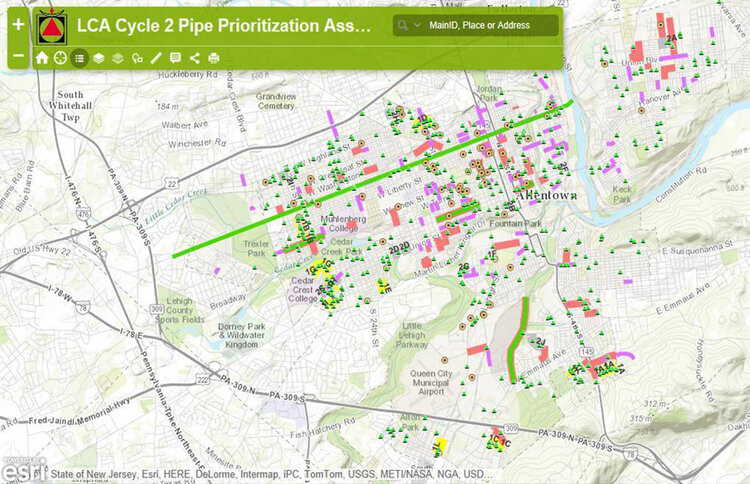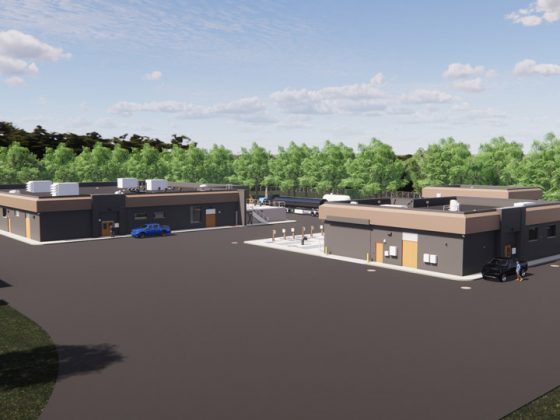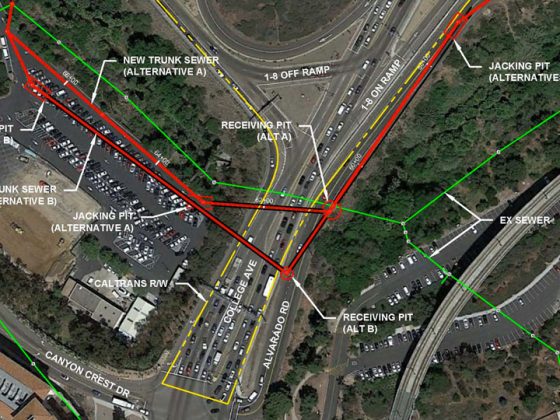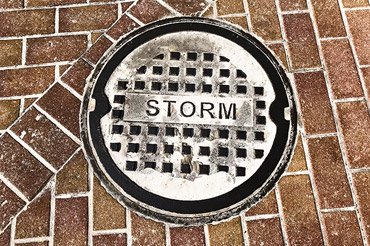Water Asset Prioritization: Harnessing Data to Streamline Infrastructure Management
Erin Laux, EIT, ENV SP, and Todd Williams, PE, ENV SP

Water infrastructure is the backbone of any utility’s ability to deliver clean and safe water. However, maintaining, managing, and prioritizing these assets presents significant challenges, especially without a comprehensive plan. Aging systems and limited resources leave many public and private utilities searching for cost-effective solutions to ensure their services’ longevity and reliability.
The City of Norfolk, Virginia, Department of Utilities and Virginia American Water lead the way in setting benchmarks for how data-driven approaches and collaborative efforts can significantly enhance water infrastructure management. In partnership with Gannett Fleming, both utilities navigated the challenges of asset prioritization and reshaped their approach to managing emergency repairs.
What Is Water Asset Prioritization?
Water asset prioritization involves the systematic condition assessment and ranking of water-related infrastructure based on criteria such as criticality to community well-being, risk of failure, and potential impact on public health and the environment. This process is crucial for ensuring the optimal allocation of limited resources, particularly for maintenance, upgrades, and emergency response planning.
By identifying which assets are most vital and at greatest risk, decision-makers can focus efforts and investments on those essential for sustaining water supply and quality, thereby enhancing the resilience and efficiency of wastewater and drinking water systems. Prioritization helps prevent catastrophic failures, minimizes service disruptions, and ensures a community’s most essential needs are met with available resources.
Norfolk’s Data-Driven and Collaborative Approach
In 2019, Norfolk began streamlining its water infrastructure management through a comprehensive transmission main prioritization program. The city used an inclusive strategy involving its engineering, water distribution, and water production divisions to craft a prioritization framework. Together, this team scored and ranked the transmission infrastructure, ensuring widespread consensus and stakeholder buy-in.
The effort culminated in a dynamic planning tool, empowering the engineering department to navigate annual capital transmission planning and monitor the impact of infrastructure improvements.
GIS Technology for Asset Management
The development of Norfolk’s prioritization tool relied on its pre-existing geographic information system (GIS) data and software tools, which were instrumental in identifying critical customers and mapping major infrastructural crossings. Integrating hydraulic results from the city’s InfoWater model into the GIS framework underscored the project’s efficiency and adaptability. By building its prioritization tool, Norfolk circumvented the need for proprietary asset management software and laid the groundwork for a model that could evolve and expand in line with the city’s growing data and changing needs.
Summarizing Norfolk’s Innovative Path
Norfolk’s approach to water asset prioritization highlights three principles essential for the successful management of water infrastructure:
- Simplicity and Adaptability: Starting with a basic yet effective prioritization framework, Norfolk demonstrated that sophisticated solutions do not necessarily require complex tools or exhaustive datasets. The city’s strategy emphasizes adaptability, allowing gradual enhancements to align with specific needs.
- Integrated Collaboration: Involving an integrated utility team bolstered the success of Norfolk’s initiative. This inclusive approach ensured the technical integrity of the prioritization tool and garnered widespread support and consensus across various departments. Such collaboration has been pivotal in empowering the City of Norfolk to confidently navigate the complexities of annual capital improvement planning, thereby securing necessary funding and support from its city council.
- Continuous Improvement and Updates: The design of Norfolk’s prioritization tool facilitates the ease of preventative maintenance and annual updates, allowing the city’s engineering team to adapt and refine the tool as needed. This approach ensures that the tool remains relevant and effective in tracking and evaluating the impact of infrastructure improvements, illustrating the importance of adaptability and foresight in water utility management.
Virginia American Water: A Parallel Journey of Transformation
Parallel to Norfolk’s endeavors, Virginia American Water also overhauled its approach to water infrastructure management. Recognizing inefficiencies and delays in executing critical infrastructure work under its existing capital improvement program, the utility sought to redefine its strategy.
Virginia American Water reshaped its approach to managing pipeline renewals and emergency repairs by making key strategic shifts.
The shifts included:
- Leveraging Peer Insights for Strategic Planning: Engaging with peer utilities and learning from their experiences provided Virginia American Water with a blueprint for refining its management practices. Peer engagement emphasized the value of learning from the successes and challenges of others in the industry, fostering a culture of continuous improvement. This engagement facilitated the adoption of more refined practices, such as the segregation of contracts for renewal works and emergency repairs.
- Streamlining Processes Through Effective Contract Management: Virginia American Water streamlined its operations by revising contract management practices, reducing the administrative burden on the utility and saving money. This strategic shift underscores the importance of allocating responsibilities to optimize efficiency and ensure focus on core operational goals.
- Using Technology as a Catalyst for Informed Decision-Making: Data and technology enable utilities to make informed, strategic decisions about their infrastructure. Adopting GIS technology for asset management significantly enhanced Virginia American Water’s planning and decision-making capabilities.
- Cultivating a Collaborative and Educational Environment: Like Norfolk, Virginia American Water recognized the importance of building a culture of collaboration and education. Engaging contractors in the process and ensuring staff are well-versed in new methodologies enhanced its internal capabilities, ensuring the long-term success and sustainability of its strategic initiatives.
Moving Forward: Enhancing Resilience and Sustainability
The experiences of the City of Norfolk and Virginia American Water provide valuable insights into the power of strategic planning, technological innovation, and collaborative efforts in enhancing water infrastructure management. These case studies address the immediate challenges utilities face and lay the groundwork for future advancements, contributing to water infrastructure systems’ overall resilience and sustainability.
Watch Our INSIGHTS Webcast
Our related webcast, “Water Asset Prioritization and Renewal – Where to Start and How to Finish,” offers additional information about the transformative power of strategic planning, collaboration, and technological innovation in water infrastructure management.
We’d love to learn more about your water and wastewater infrastructure challenges. Let’s connect so that together, we can increase the resilience and sustainability of our water infrastructure.
Featured Projects
EXCELLENCE DELIVERED AS PROMISED®













